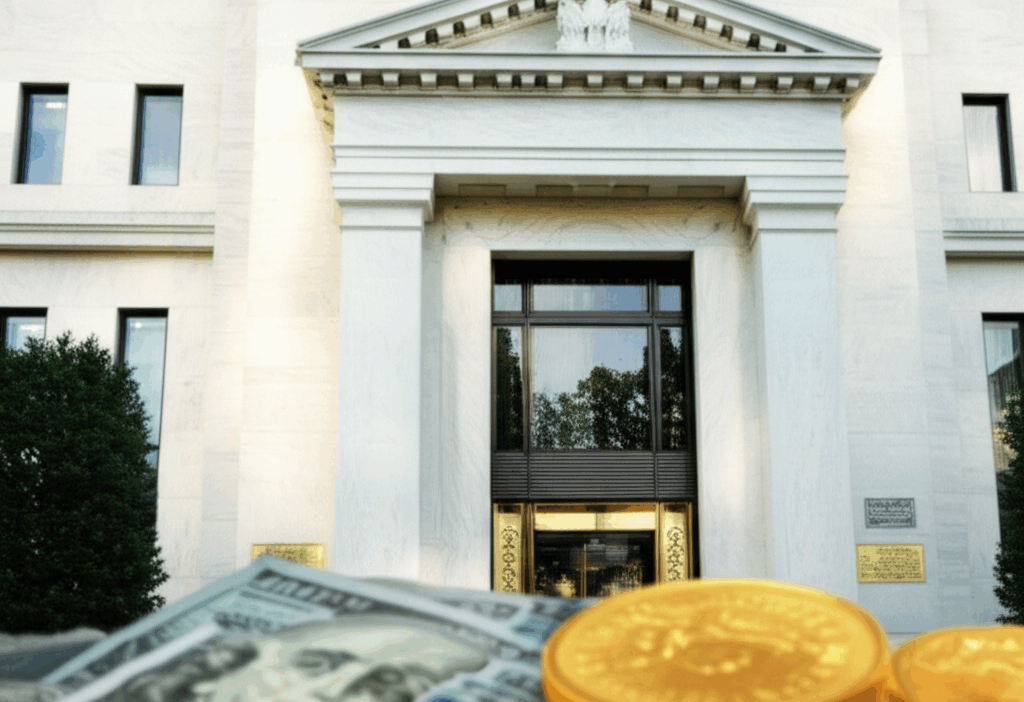Gold Dips as Middle East Tensions and Fed Caution Weigh on Sentiment
In a surprising turn for a traditionally stable asset, gold prices have recently experienced a notable dip, confounding expectations that geopolitical instability typically bolsters its appeal. The precious metal, long hailed as a safe haven during times of global uncertainty, appears to be struggling under the dual weight of persistent Middle East tensions and a hawkish Federal Reserve outlook. This complex interplay of forces is challenging investor sentiment and prompting a re-evaluation of gold’s role in the current economic landscape.
For centuries, gold has served as a reliable store of value, often appreciating when other assets falter. Its status as a safe haven is particularly evident during periods of geopolitical unrest, as investors flock to its perceived security amidst the turmoil. The ongoing tensions in the Middle East, characterized by persistent conflicts and regional flashpoints, would, in a typical scenario, fuel a strong demand for gold. Concerns over supply chain disruptions, energy price volatility, and the broader economic fallout from such conflicts usually translate into higher gold prices as a hedge against inflation and uncertainty. However, despite the continued volatility emanating from the region, gold’s performance has not mirrored this historical pattern. Instead, it has shown susceptibility to downward pressure, indicating that other, more potent factors are currently at play.
The primary counterweight to gold’s safe-haven appeal appears to be the evolving stance of the United States Federal Reserve. The Fed’s monetary policy, particularly its approach to interest rates, exerts a significant influence on gold prices. Gold, unlike bonds or cash, does not yield interest or dividends. Therefore, when interest rates rise, the opportunity cost of holding non-yielding gold increases, making interest-bearing assets more attractive to investors. The current “caution” from the Federal Reserve signals a potential for interest rates to remain higher for longer than previously anticipated, or at the very least, a delay in the widely expected rate cuts. This outlook is largely driven by robust economic data, including resilient job growth and inflation figures that, while moderating, remain above the Fed’s long-term target. Higher interest rates also tend to strengthen the U.S. dollar, in which gold is denominated. A stronger dollar makes gold more expensive for holders of other currencies, further dampening demand.
The paradox of gold’s recent performance lies in the powerful interaction between these two seemingly disparate forces. While Middle East tensions continue to underscore global instability, creating an environment that should theoretically boost gold, the allure of higher yields in a rising interest rate environment, coupled with a strong dollar, is proving to be a more dominant force. Investors, particularly institutional ones, are increasingly prioritizing yield and the reduced risk perception of holding dollar-denominated assets over the traditional safety of gold. This re-prioritization suggests a market that is less concerned about immediate geopolitical contagion and more focused on the trajectory of global interest rates and economic growth. The bond market, for instance, has seen yields climb, reflecting the “higher for longer” narrative from central banks, further drawing capital away from non-yielding commodities.
Looking ahead, the trajectory of gold prices will largely depend on the relative strength of these competing narratives. Any significant de-escalation of Middle East tensions, or conversely, a dramatic escalation that truly threatens global economic stability beyond current expectations, could shift sentiment. Similarly, any clear signal from the Federal Reserve of an imminent pivot towards rate cuts, perhaps triggered by cooling inflation or a significant slowdown in economic activity, would likely provide a much-needed boost to gold. For now, gold investors find themselves navigating a nuanced landscape where geopolitical realities clash with the powerful dynamics of monetary policy, requiring a careful re-evaluation of traditional market wisdom.
—





